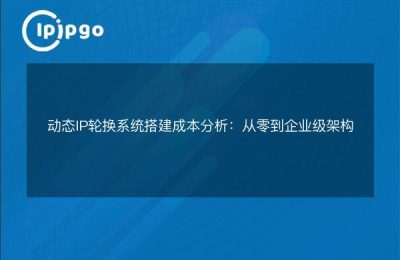
Core Requirements and Pain Points for Static IP Enterprise Bandwidth
Enterprises dealing with large-scale data interaction and automated business processes often encounter problems of insufficient network stability or limited IP resources. Ordinary dynamic IP may be disconnected during long tasks, resulting in business interruption or data loss. WhileEnterprise Static IPIts uniqueness lies in the provision of a fixed network identity, which, together with high bandwidth resources, can ensure stable operation 24/7.
For example, e-commerce platforms need to manage multiple store accounts at the same time, and if you use ordinary IPs, it is easy to trigger the platform's wind control mechanism. At this timeStatic IP + high bandwidth combinationIt ensures an independent network environment for each account and supports high-frequency operations such as image uploading and inventory synchronization.
How to Choose a Proxy IP Solution for Enterprise Scenarios
The professionalism of a static IP service provider can be judged in three dimensions:
| Coverage | Inclusion of areas required for operations |
| Protocol Support | HTTP/Socks5 and other full protocol compatibility |
| network quality | Packet loss rate lower than 1%, response time <50ms |
Taking ipipgo as an example, its global IP pool covers 240+ countries and regions, which is especially suitable for multinational enterprises to deploy localized business nodes. ThroughResidential Static IPSimulates the real user network environment to effectively reduce blocking risks in data collection, advertisement delivery and other scenarios.
Hands-on deployment tips for enterprise-class static IPs
1. Multi-IP Rotation StrategyEven if static IP is used, it is recommended to assign independent IP segments according to business modules. For example, the customer service system, order system are bound to different IP, to avoid a single point of failure affect the overall business.
2. Intelligent bandwidth allocation: Through the API interface provided by ipipgo, you can monitor the bandwidth usage of each IP in real time. Automatic allocation of bandwidth resources during high load periods such as live streaming and file transfer.
3. abnormal melting mechanism: Setting up traffic threshold alerts, automatically switching alternate lines when an IP encounters abnormal access, ensuring that critical services are not interrupted.
Frequently Asked Questions QA
Q: Can I mix static and dynamic IPs?
A: Support mixed deployment, it is recommended to bind static IPs for core business and use dynamic IPs for temporary tasks. ipipgo console provides IP grouping management function with customizable switching rules.
Q: How do I verify the purity of the IP?
A: You can check whether the IP is labeled by mainstream platforms through the IP history detection tool. ipipgo all static IPs are scanned through the blacklist to ensure that each IP has a "cooling period" of more than 6 months before using it.
Q: How do I deal with delays in cross-border operations?
A: Choose the local backbone node access. ipipgo has deployed dedicated network channels in Europe, America, Southeast Asia, etc. Through BGP intelligent routing technology, the actual test cross-country latency can be reduced by more than 40%.
Key elements of long-term stability
Enterprise-grade static IP services require continuous technical investment. ipipgo usesThree-tier safeguard mechanism: The physical layer uses enterprise-class server room equipment, the network layer implements traffic cleaning protection, and the application layer provides 7-day log traceability. It is recommended to conduct IP health testing once a month to replace low-quality resources in a timely manner to maintain the best state of the business network.








